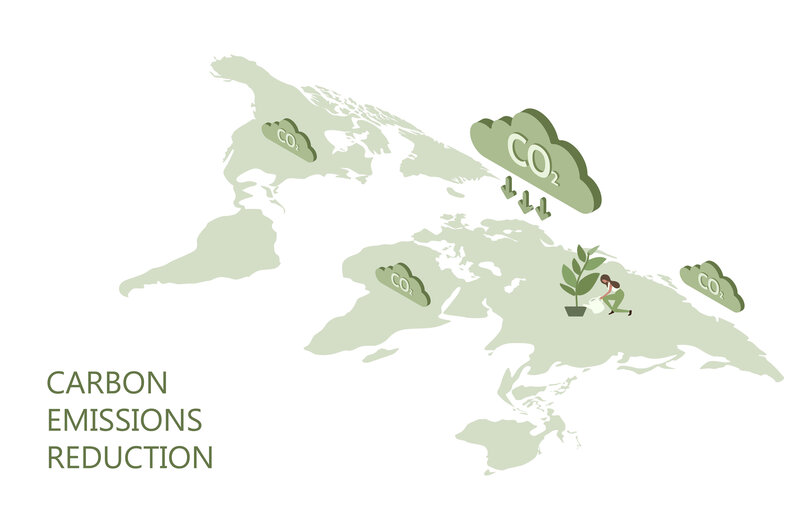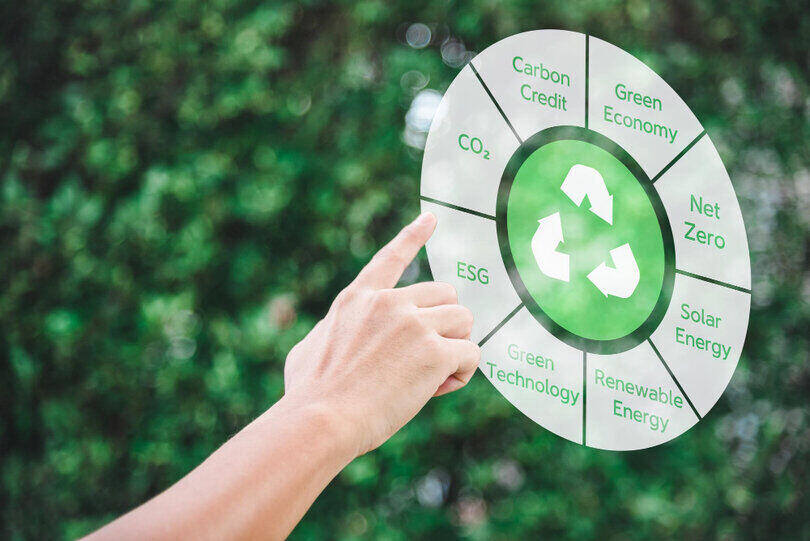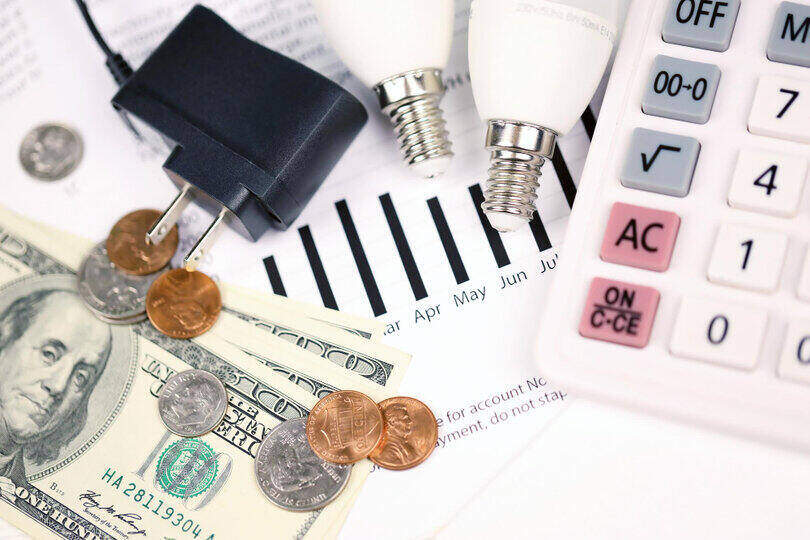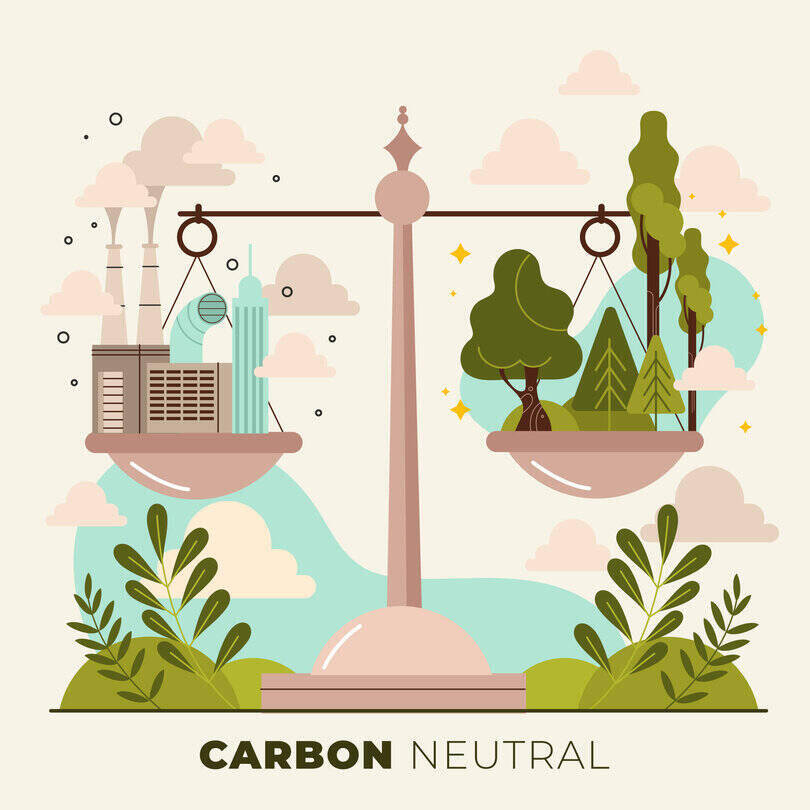If you’re looking to offset your carbon emissions, you might be wondering what the difference between carbon credit and carbon offsetting is. Both options are ways to “neutralize” your emissions by supporting green energy initiatives that offset the pollution you generate.
But there are some key differences between credits and offsets that you should be aware of before making a decision. Let’s break it down in this blog post.
What is a Carbon Credit and how does it work?

A carbon credit is a generic term for any tradable certificate or permit, that represents the right to emit one ton of carbon dioxide or its equivalent, of another greenhouse gas within an authorized emission period. The carbon credit system is meant to be a way to control emissions and help reduce overall pollution levels.
How Does It Work?
The carbon credit system works by setting a limit, or cap, on the total amount of carbon dioxide emissions – or certain greenhouse gasses that can be emitted each year. This cap is lowered over time in order to reduce the overall greenhouse gas emission levels.
Emitters are then given or sold a number of carbon credits equivalent to their allowed emissions. If an emitter needs to exceed the limit, he/she must purchase credits from another party. This system is known as the cap-and-trade system.
The idea behind this system is that it creates a financial incentive for businesses to reduce their emissions. With carbon credits costing money, businesses have an added reason to find ways to pollute less.
Aside from reducing pollution levels, carbon credits also create a new market for trading and investing. The price of credits fluctuates depending on supply and demand like any other commodity. This can create opportunities for those looking to invest in carbon credits as a way to make money.
What is Carbon Offset and how does it work?
You’ve probably heard the term “carbon offset” before, but you may not be entirely sure what it means. In short, a carbon offset is a way to compensate for your greenhouse gas emissions by investing in products or projects that capture or prevent an equivalent amount of emissions elsewhere.
Carbon offsets are sometimes criticized as a way for people to “buy their way out” of taking responsibility for their impact on the environment. However, when done correctly, carbon offsets can be an important tool in the fight against climate change.
By definition, a carbon offset is a reduction in emissions of carbon dioxide or other greenhouse gases made in order to compensate for or balance an emission made elsewhere. One carbon offset equals one metric ton of CO₂ saved.
How does it work?
When purchasing carbon offsets, you are essentially funding a project that will either prevent greenhouse gas emissions from happening in the first place (such as by planting trees) or that will capture greenhouse gas emissions that have already been released into the atmosphere (such as through capturing methane from landfills).
The goal of carbon offsets is to achieve what is known as “carbon neutrality.” This means that your net emissions are equal to zero. In other words, you are not contributing any additional greenhouse gases to the atmosphere beyond what nature can naturally remove.
Not all carbon offsets are created equal, however. Some types of carbon offset projects are more effective than others at reducing greenhouse gas emissions. And some projects may have other positive impacts on local communities or the environment beyond just reducing emissions.
For example, tree-planting programs can help reduce deforestation and provide much-needed income to smallholder farmers. Solar energy projects can provide clean energy to remote villages that would otherwise have to rely on diesel generators. And landfill gas capture projects can provide a source of renewable energy while also reducing methane emissions.
The difference between Offsets and Carbon Credits
If you’re looking to go carbon neutral, carbon offsets and carbon credits are an efficient way of reducing your carbon footprint. However, there are some key distinctions between the two.
Carbon offsets represent a reduction in greenhouse gas emissions that is achieved by projects that prevent, reduce or remove greenhouse gases from the atmosphere. These projects can be located anywhere in the world and can take many forms, such as planting trees, developing renewable energy, or improving energy efficiency.
Once these projects have been verified, they create carbon offsets that can be purchased by individuals or businesses looking to offset their own emissions.
Carbon credits are very similar to offsets, but there are a few key differences. First, carbon credits can only be generated by projects located within developed countries that have ratified the Kyoto Protocol—an international agreement to reduce greenhouse gas emissions.
Second, carbon credits represent a unit of measurement for greenhouse gas reductions rather than actual reductions themselves. One carbon credit is equivalent to one metric ton of CO₂ (or its equivalent) removed from the atmosphere.
Third, and most importantly, carbon credits can be traded on carbon markets. These markets provide a way for companies to financially invest in emission-reduction projects as a means of offsetting their own emissions.
When a company purchases a carbon credit, it does not receive any actual environmental benefits—in other words, its emissions aren’t actually reduced. Rather, it receives the financial benefits associated with investing in an emission-reduction project.
Comparing the Advantages of Carbon Credits vs Carbon Offsetting
Advantages of Carbon Credits

- They provide an incentive for businesses to reduce their emissions because they can then sell their surplus credits on the market.
- They also create a financial incentive for businesses to invest in cleaner technologies.
- Carbon credits can be used to finance projects that would otherwise be too expensive or difficult to implement, such as planting trees in developing countries.
- Carbon credits also help hold businesses accountable for their emissions by creating a transparent system where businesses must report their emissions each year.
Advantages of Carbon Offsets

- They’re flexible because you can choose which projects to support and how many units to buy.
- They’re measurable: you can calculate exactly how much your emission reductions cost per ton.
- They support relevant causes since many projects focus on renewable energy, which has ancillary benefits like job creation.
- The standards are improving. As the market matures, there are more regulations in place to ensure that projects create real, quantifiable, and permanent emission reductions.
Tips for reducing your Carbon Footprint
You don’t have to be a big business to make a difference when it comes to reducing your carbon footprint. There are plenty of things you can do at home to cut down on your emissions. Here are eight tips to get you started.
1. Drive less

If you can, walk or take public transportation instead of driving everywhere. You’ll save money on gas and help reduce greenhouse emissions from your car.
2. Use energy-efficient appliances
When it’s time to buy a new fridge or washing machine, look for models that have the Energy Star label. These appliances use less energy and water, which means they’re better for the environment and your wallet.
3. Change your light bulbs

Switching to LED bulbs is an easy way to save energy and money. LEDs last longer than traditional incandescent bulbs and use about 75% less energy.
4. Unplug devices when you're not using them
Even if they’re turned off, many devices still use power when they’re plugged in (this is known as “vampire power”). So, unplugging your TV, computer, and other electronics when you’re not using them can help save energy and money on your electric bill.
5. Adjust your heater temperature
During the summer, set your heater to 68 degrees Fahrenheit (20 degrees Celsius) when you’re home and 60 degrees Fahrenheit (15 degrees Celsius) when you’re away or sleeping. In the winter, set it to 78 degrees Fahrenheit (26 degrees Celsius) when you’re home and 85 degrees Fahrenheit (29 degrees Celsius) when you’re away or sleeping.
Make sure you are taking other steps to reduce your energy use during cold weather too—such as making sure that windows, doors and other openings are properly sealed off from drafts—to maximize efficiency and help keep costs down. During summer, do the opposite and make sure to open the windows to let in as much air into the room as possible.
6. Wash clothes in cold water
About 90% of the energy used by washing machines goes towards heating the water. So washing your clothes in cold water instead of hot can make a big difference. Just remember to properly sort your laundry first so that colors don’t bleed!
7 . Line-dry your clothes
If you have the space, line drying your clothes is a great way to save energy. If you don’t have an outdoor clothesline, you can buy an inexpensive portable one that you can use inside your house.
8. Reduce, Reuse, Recycle
If you have the space, line drying your clothes is a great way to save energy. If you don’t have an outdoor clothesline, you can buy an inexpensive portable one that you can use inside your house.

We’ve all heard this slogan before, but it really is the best place to start when looking for ways to reduce your carbon footprint. Take a few minutes to think about how you can reduce the amount of trash you produce each week. Maybe you can start bringing reusable bags to the grocery store or recycling more at home.
The next step is to find ways to reuse items rather than throw them away. There are all sorts of creative ways to do this. For example, instead of buying paper towels, try using old rags or even newspapers. Do you really need that new pair of shoes or can you make do with what you have? Reducing and reusing will not only help the environment but also your wallet.
As a last resort, recycle anything that you can’t reduce or reuse. Most communities have some sort of recycling program so take advantage of it. It’s amazing what can be recycled these days so before you throw something away, check if it can be recycled first.
Experience Automatic Carbon Offsetting by using Carbon/Neutral
There’s no doubt that climate change is one of the biggest challenges of our generation. As individuals, it can feel like there’s not much we can do to combat such a huge global problem. However, there are some simple steps we can all take to help reduce our carbon footprint and make a positive impact on the environment.
One way to do this is to offset our carbon emissions and the most efficient means of achieving the same is Carbon/Neutral.
Carbon/Neutral makes it easy to offset your emissions. Simply calculate your carbon footprint using our online calculator, and then choose from a range of offsetting options to suit your budget. Get personal insights on your spending habits and avail yourself of our automatic offsetting donation services that make calculated donations, based on your carbon footprint for the month, on your behalf.
Register now to begin your journey of going carbon-neutral today!
